Bucine
Badia a Ruoti Abbey
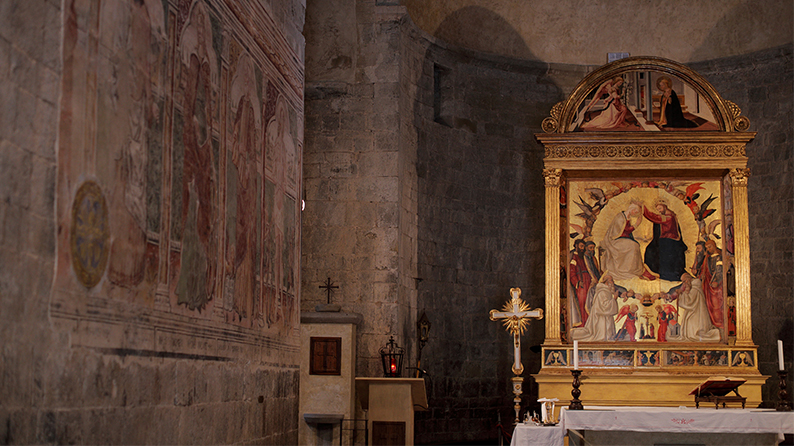
Visiting the fascinating timeless village of Bucine it is possible to be enchanted by the Badia a Ruoti, an abbey perched on the cobblestone alleys that dates back to around the year 1000 when it belonged to the Camaldolese monks; in truth there are clues that suggest that even before it was owned by the Benedictines. Due to frequent sieges, in the past it witnessed struggles and wars that from time to time badly reduced the abbey complex, forcing it to undergo some structural interventions, so much so that it lost its original appearance during the 17th century.
Today, thanks to various restorations, we can admire the original form of the Abbey of San Pietro a Ruoti back to life. The church has a hanging prototype dating back to the 11th century on the façade. The interior, which develops like a Latin cross, has a single nave ending in a semicircular apse;at the intersection of the nave with the transept there is a dome covered on the outside by a high octagonal lantern. It contains some frescoes from the 16th century that the passing of the centuries has made fragmentary: these paintings cover the internal side walls and seem to accompany the visitor’s gaze towards the golden painting of the incoronazione della Vergine by Neri di Bicci (1472) Coronation of the Virgin by Neri di Bicci made in 1472.
The abbey has gradually grown. In fact it was originally smaller with a roof. in perfect Romanesque style, made of trusses and covered with stone slabs. Later it was enlarged with the addition of the transept of the apse and the bell tower. To rebalance the new dimensions of the complex, the roof was raised with the use of red bricks that replaced the stones. Not far from the abbey of Badia a Ruoti you find a majestic old oak that seems to be in a deep slumber. It stands out in the country-side; it is called a “memory tree”. Its 27 meters of high constitute a sort of natural link between land and sky.
INFORMATION
Possible booking of guided visits at “ Neri de Bicci” Association.
CONTACTS
Neri de Bicci Association.
Phone. 338 5929912
Phone. 339 2447023
Parish Church and Tower of Galatrona
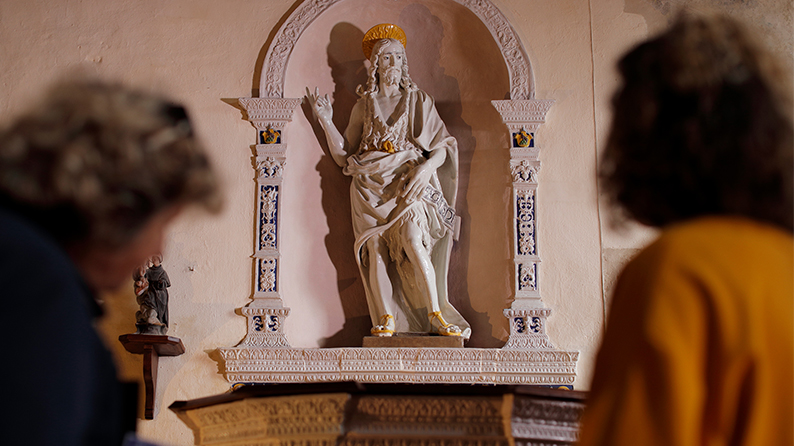
It houses three works by Giovanni Della Robbia, made between 1517 and 1521 including: the baptismal font placed along the right nave, it portrays the life of Saint John the Baptist in five panels in relief,in the sixth panel, the front one, the baptism of Christ is instead depicted. The statue of Saint John the Baptist announcing the coming of the Savior with his right hand while in the left he holds a cartouche. He is surrounded by a frame frescoed with floral motifs.
On the high altar the ciborium , the third masterpiece of Robbia, rises in all its grandeur. In the six panels the carved figures of Jesus loaded with the cross, Mary Magdalene and John, Saints Leonardo and Jerome, they seem to come to life.
The Galatrona Tower (dating back to the tenth century) dominates looking over the entire side of the Valdarno. This watchtower, called “il torrione” is what remains of the castle of Galatrona, , located at the end of a long rocky spur that melts with Monteluco del Chianti. The tower, built in sandstones and bricks, is divided into five floors and the terrace, at the top of the tower. makes you feel the strategic position from the Valdarno to all its borders and the Valdambra. From the top you can enjoy a panorama of extraordinary beauty: wonderful villages perched on rolling hills, fields and cultivated land, in which the cultivation of vines and olive trees stands out, supported by traditional dry stone walls and thick woods of heather, junipers, holm oaks, strawberry trees and brooms.
INFORMATION
The Parish Church of Galatrona can be visited from April to October every Sunday and every public holiday from 04:00 am
at 06:00 pm (visits on request for groups of minimum 8 people on other days of the week).
CONTACTS
Pieve di Galatrona Volunteers Group
Phone 338 2879310
Pogi Bridge
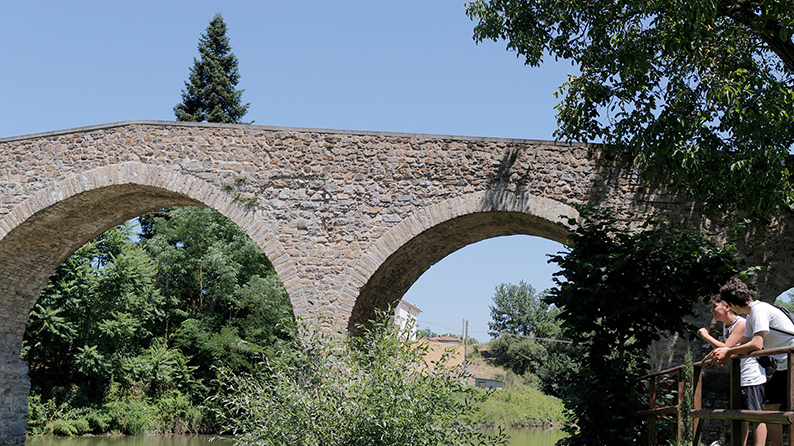
Both the river and the bridge with its five stone arches retain the same ageless atmosphere: precious heritage and incomparable legacy.
The recent renovation has given new splendour, the bridge is perfectly integrated in the banks of the river surrounded by soft vegetation. The place is the ideal destination for lovers of trekking, fishing and photography.
Not far away, perched on the hill, there is Pogi alta, an ancient and characteristic fortress, once a castle today enchanted village composed of stone houses.
Castelfranco Piandiscò
Abbey of San Salvatore in Soffena
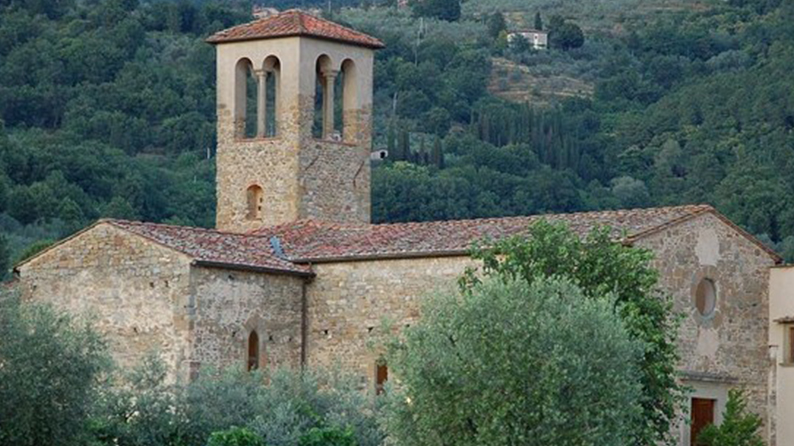
The Annunciation attributed to the Master of the Cassone Adimari follows. In the transept, on the right, the great Massacre of the Innocents is striking for the drama of the representation. Generally attributed to Liberato da Rieti, it has recently been referred to a Florentine painter, the Master of Bibbiena, so called for the triptych he painted there and which served as a term of comparison for the attribution of both the Massacre of the Innocents and of the underlying Visitation. The latter, stylistically more mature, was performed in a period close to that of Bibbiena (about 1425-1430) (Donati).Behind the altar, the Madonna enthroned with the Child with the SS. Lazzaro and Michele Arcangelo, still in a Gothic style but with an attempt to place it in perspective, is attributed to Mariotto di Cristofano, brother-in-law of Masaccio and Scheggia. On the left we see an Annunciation in the upper register and the Madonna della Misericordia in the lower one. In front of Madonna and Child with SS. Pietro and Francesco di Paolo Schiavo, Bicci di Lorenzo frescoed San Giovanni Gualberto, founder of the Vallombrosan Order, with scenes from the life of the saint.
INFORMATION
Free admission
OPENING HOURS
Monday, Wednesday, Friday from 1:00 to 7:00 pm Tuesday, Thursday, Saturday from 8:00 am to 2:00 pm
CLOSING DAYS
The 2nd and 4th Monday of the month and 1st and 3rd Sunday of the month January 1st, May 1st and December 25th
CONTACTS
For reservations and information: from Monday to Friday 8:00 am to 1:00 pm
Phone: 055 9631259
Phone: 055 9149551
Castelfranco – Historic centre
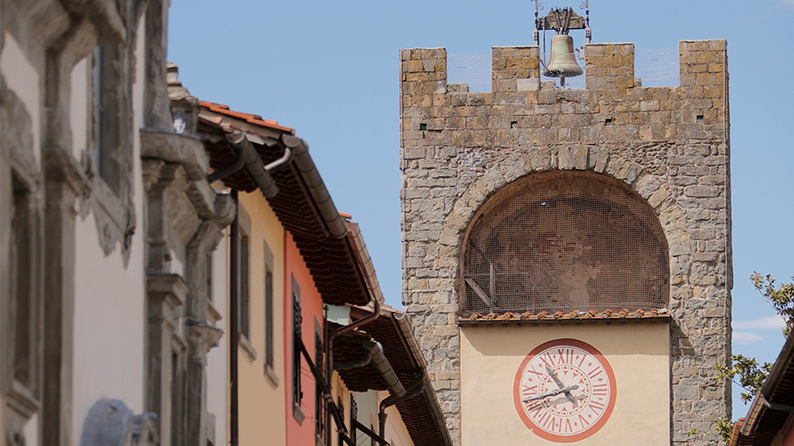
Porta Buia (on the north-west side) and Porta Montanina (on the north-east side) were demolished respectively in 1858-59 and in 1867.
The oldest representation of the entire city dates back to 1585 and is located between the Piante di Popoli e Strade in the Archivio dei Capitani di Parte Guelfa in Florence: a systematic mapping of the streets (of the Grand Duchy of Tuscany) was requested by the Grand Duke Francesco I de ‘Medici, which turned out to be very useful for reconstructing the ancient topography.
The Parish Church of Santa Maria a Scò
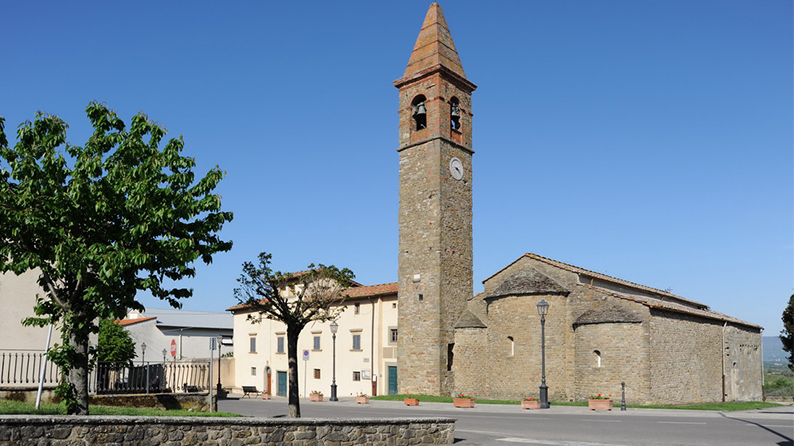
The frontispiece of the structure is decorated with five blind arches with long pilasters running parallel to the bottom and with a quadrangular stone row; it is also composed of regular stones.
The interior is spread over three naves and ends with groups of apses, with single lancet windows closed by alabaster slabs.
Inside it is almost possible to feel the whole sensation of peace and sacredness, where a solemn silence hovers, interrupted only by the whispering of prayers.
The interior is divided by monolithic pillars and columns surmounted by the trussed roof, which highlights a fresco of undoubted beauty, depicting the Madonna enthroned with the Child; the painting is attributed to Paolo Schiavo (from the mid-15th century). The interior of the church is also embellished with Romanesque capitals, of great beauty, carved in high relief in pietra serena, dating back to the 12th century.
In 1862 it was damaged by a lightning during a storm, so the bell tower was renovated, bringing to light all its magnificence and the entire structure raised and embellished by the pyramidal spire roof surmounted by the lightning rod.
CONTACTS
SP85, 52026 Pian di Scò (AR)
Parish center
Phone: 055 960133
The Balze
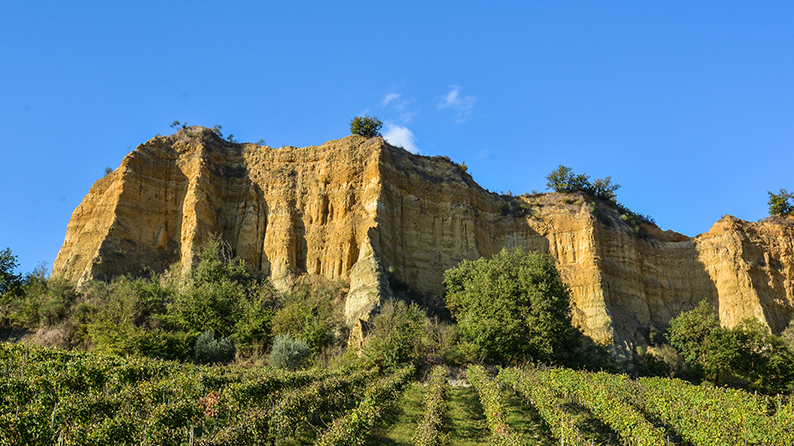
Walking or riding in the valleys winding through the high and steep sides of the Balze allows you to immerse yourself in the mysterious atmosphere of a fairy tale, for this reason you find sites with imaginative names such as “Casa delle Fate”, “Paradiso”, “Purgatorio ”or“ Inferno”.
CONTACTS
City Hall
Phone : 055 9631259 – 262
Cavriglia
Circuiti Bellosguardo
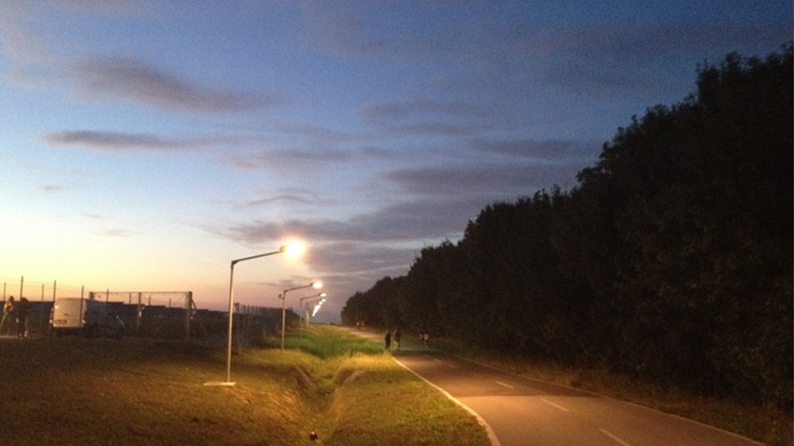
Particularly suitable for outdoor sports it is easily accessible thanks to the excellent road equipped with a large parking. The structure of Bellosguardo is divided into two rings, one undulating, one kilometer and 400 meters long and another completely flat, illuminated, of 1 km and 100 meters. The two rings join into a unique circuit for two and a half miles.
Roseto Botanico Carla Fineschi
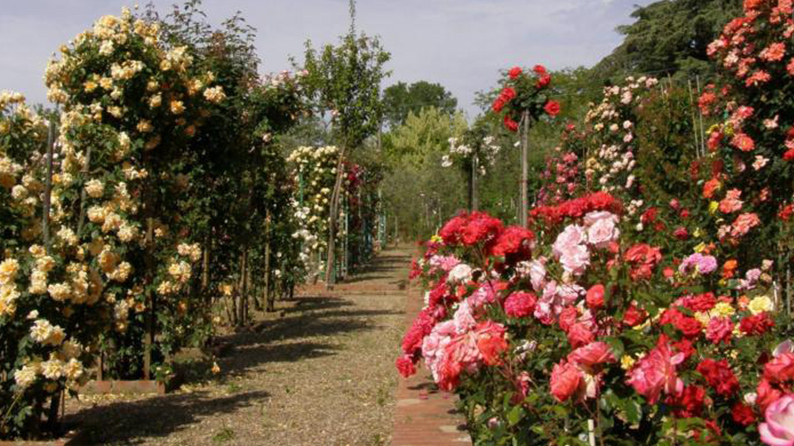
Unique garden, founded in 1967, the Roseto Botanico Carla Fineschi is one of the largest rose gardens in the world. Spectacular, vast and suggestive. It is considered an artistic heritage. It shows over eight thousand five hundred varieties of roses and plants that come from every part of the world: the oldest “species” is 40 million years old.
Walking along the paths of the rose garden you are enveloped by a sweet fragrance and harmonious colours of the lawns and flower beds.
INFORMATION
The Roseto is open every week and holidays from the first Sunday of May to the last Sunday in June, from 9am to 7pm. For visits by large groups, the booking is required. Admission includes a donation to the Association equal to Euro 6.00 per person.
CONTACTS
Phone 338 4062717
E-mail: info@rosetofineschi.it
www.rosetofineschi.it
Museo Mine
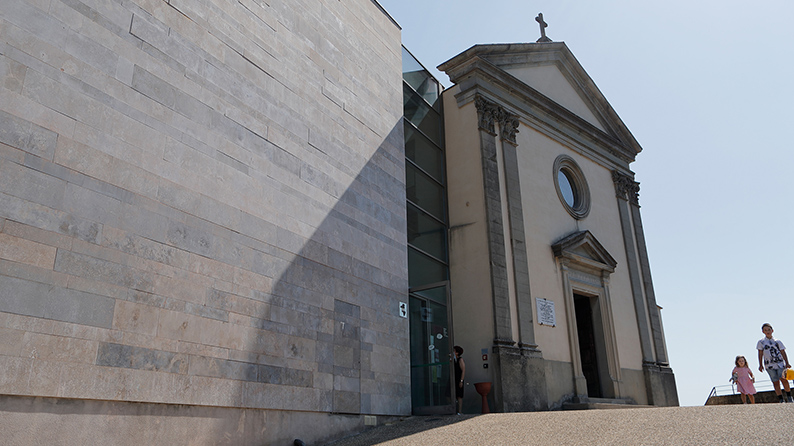
Mine – “Mines” is the name of a suggestive museum complex, in the abandoned village of Castelnuovo of the Sabbioni, which documents the history of Cavriglia: a village that has been strictly connected for almost two centuries to the lignite mines exploitation.
The museum shows the events, linked to the mine, that have deeply marked this territory. The village was the scene of a terrible Nazifascist massacre. At the beginning of the street, a shrine recalls the 74 civilian victims of the massacre perpetrated by the Nazis on July 4, 1944. Some houses in ruins surround the road that leads to the upper part of the town which includes some recently recovered buildings that have been transformed into “museum spaces”: the former church of San Donato, used as a multifunctional space, the exhibition center, and a building dating back to 1925 used as a center of documentation and space for educational activities. The common logic that pervades these spaces is strongly aimed at the involvement of the visitor for a thorough knowledge of preserved cultural heritage.
The MINE museum regularly carries out educational activities, campuses and days dedicated to activities for children and families; it also has a documentation centre in which paper and digital materials that tell the story of this land are preserved. The catalogues are available online in the museum website.
INFORMATION
Opening hours of the museum
from Tuesday to Sunday at 10:00-13:00
Saturday and Sunday at 15:00-18:00
Full Ticket: € 5,00
Reduced Ticket: € 3,00
CONTACTS
Via 25 Aprile Paese abbandonato di, 52022 Castelnuovo dei Sabbioni AR
Tel. 055 3985046
E-mail: info@minecavriglia.it
www.minecavriglia.it
Laterina Pergine Valdarno
The historic centre of Laterina
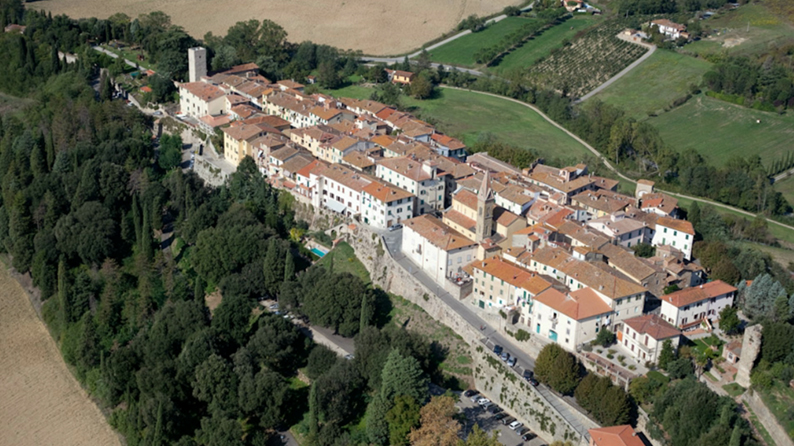
Architectural landmarks which are Timeless artistic beauties.
The historic center welcomes the Municipal Theatre, recently restored and reopened to the public, is home to theatrical performances. Coming down from the hill you can admire two other important churches dedicated to the Madonna which are the Church of Santa Maria in Valle and the Church of Madonna della Neve.
The center of Pergine Valdarno
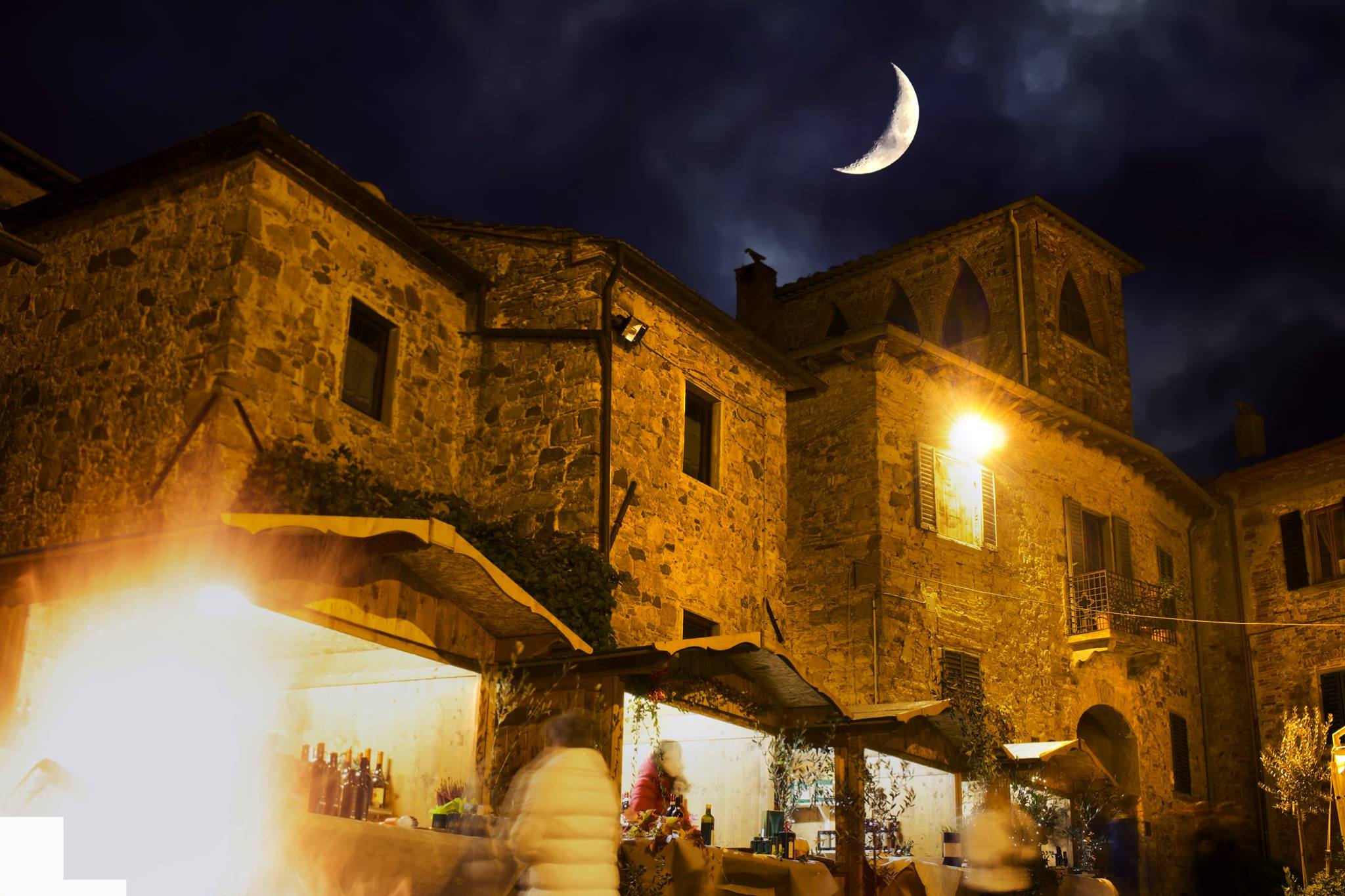
Loro Ciuffenna
Venturino Venturi Museum
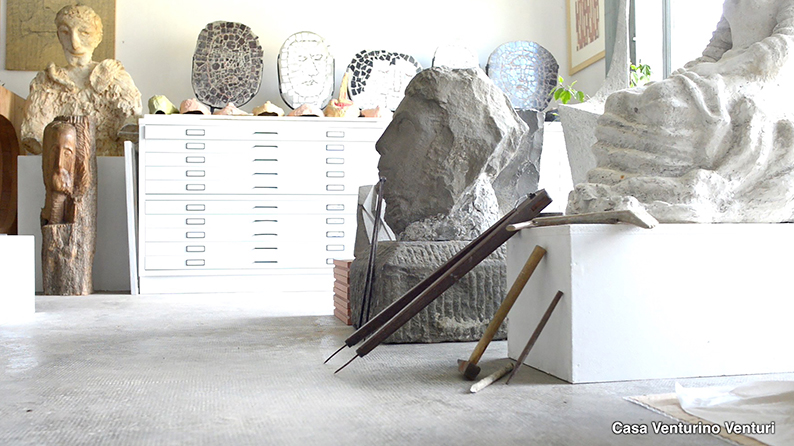
The Museum houses a large number of sculptures and drawings, testifying to over forty years of the artist’s activity. In addition to the subjects dear to the author, the motherhood, Pinocchio, the War,we find sculptural portraits of great interest representing important figures of the lively twentieth-century Florentine world such as Ottone Rosai, Vasco Pratolini, Mario Luzi, and Antonio Bueno.
INFORMATION
Opening time:
From 1st April to 30th September every day from 10:00 am to 1:00 pm and from 4:00 pm to 7:00 pm
1 October-31 March Friday and Saturday 3:00-6:00 pm
Sunday 10:00 am-1:00 pm and 3.00-6.00 pm
1st November, 8th December, 26th December, 1st January, 6th January 10.00-13.00 and 15.00-18.00
Casa Venturi, atelier of the Lorese artist, can be visited upon request, the setting in which he worked and lived in the last years of his life.
CONTACTS
Phone: 055 9170136
Historical Center of Loro Ciuffenna
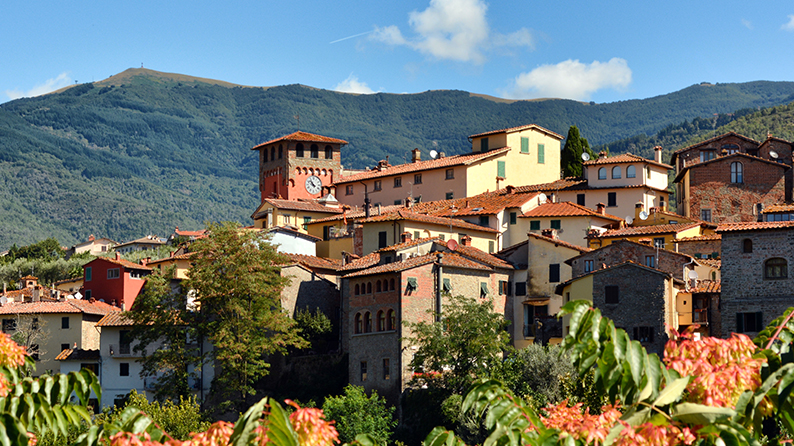
For its landscape, historical and cultural features, the Municipality of Loro Ciuffenna was admitted in the Club of the most beautiful villages in Italy, which today has 250 members.
It is a mild-hill picturesque village located between the valley of the Arno and the massif of Pratomagno. In medieval times it was a fortified village, as you can guess approaching the ancient walls, built overhanging the gorges of the river Ciuffenna, or crossing the old bridge of Romanesque times, or visiting the water mill still working. But it is through the gate of the Clock that you enter the most charming part of the village: the central Via Dante is in fact bordered by paved streets that get dark and winding in the ancient district of Fondaccio in which, besides the houses, there were shops and warehouses of merchants and craftsmen.
It was the economic heart of the castle with the noble palace, today in Piazza Don Mazzoni, a small space that encloses both the Church of Santa Maria Assunta and the palace in which the Guidi Counts resided when visiting their estate. Inside the Church of S. M. Assunta there are works of high artistic value such as a Pietà and an Annunciation of the mid-sixteenth century by Carlo Portelli.
Just outside the village there are some sacred buildings that arose to receive tabernacles of miraculous images, such as the sanctuary of Our Lady of Humility, on the road to Gropina, showing seventeenth-century works. But we have to point out that the parish churches, built on the route of the ancient Via Clodia, which roughly follows the current Via dei Setteponti, characterize this territory. Of the six parishes on the Setteponti, two are in fact in the municipality of Loro: San Giustino and Gropina. All around, the landscape is characterized by traditional terraces and the presence of Balze , curious natural formations of clay and sand up to a hundred meters high: the Apennine massif of Pratomagno with its ridge of gentle slopes, is a unique habitat in which crops, forest and slopes of meadow alternate
Romanesque Parish church of San Pietro a Gropina
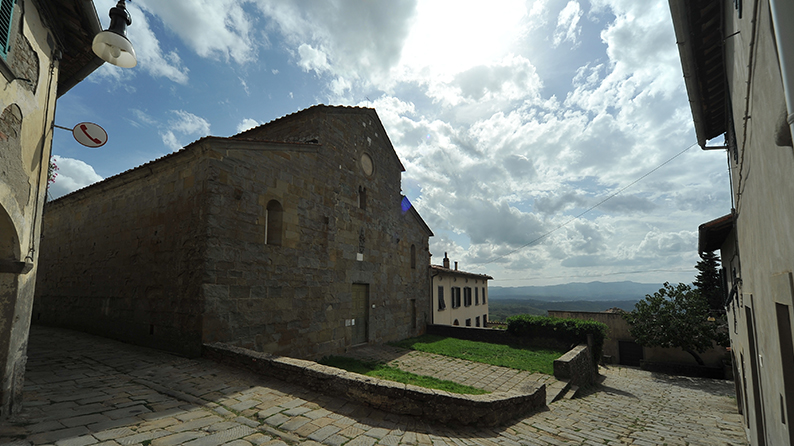
The Pieve di San Pietro a Gropina is one of the most interesting of our region and it has been declared a national monument. The current construction dates back to the period between the end of XII and the start of XIII century: the archaeological excavations testify that it’s located over the rests of two ancient churches, a V-VI century AD paleo – Christian church, built on pre-existent roman structures, and a second one from the Lombard age that was a remake and an expansion of the first one. It has a facade made by ashlar rocks and a semi-circular apse covered with irregular stone slabs, enriched with arcades and columns. The interior consists of three naves separated by round arches resting on monolithic columns. Relevant are the symbolic figures sculpted both on the capitals and on the semi-circular ambo taken from the bestiaries or the gospels, in addition to pagan allegories that were Christianised.
INFORMATION
Opening hours
From June 21 to September 21: 9.00 am-7.00 pm
From September 22 to September 20: 9.00 am-5.00 pm
CONTACTS
www.gropina.it
Montevarchi
The Fortress for sculpture
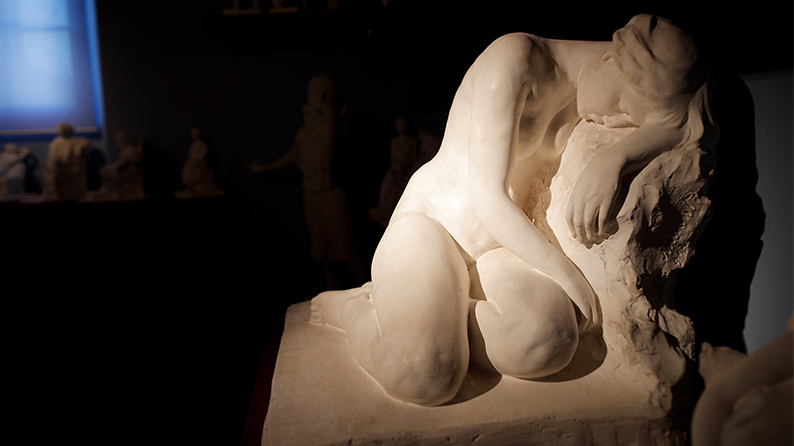
A gray stone castle, in the center of a large and scenic square, is what makes the town of Montevarchi unique for its original urban layout in the Arezzo area, at the gates of Chianti.
The castle houses hundreds of sculptures created between the nineteenth and twentieth centuries.
The permanent collection on display, entirely restored, consists of over half a thousand works including bronzes, marbles, plaster casts, terracotta and drawings, by Tuscan and Italian artists arrived in Montevarchi thanks to donations from private individuals. In dedicated rooms, the visitor can thus admire the most important creations of artists such as Michelangelo Monti, Timo Bortolotti, Arturo Stagliano, Alberto Giacomasso, Mentore Maltoni, Valmore Gemignani, Odo Franceschi, Mario Bini, Francesco Falcone, Quinto Ghermandi, Diana Baylon, Florence Poggi and Donatella (Dodi) Bortolotti. Today all these works are the heritage of the Arezzo institution and can be admired together with the sculptures of artists from Montevarchi such as Pietro Guerri, Elio Galassi and Ernesto Galeffi, formerly owned by the municipality.
The educational offer is wide and varied for both schools – from nursery school to secondary school grade – and children with their families who are offered creative workshops, games, theatre performances as well as Easter, September and Christmas campuses.
With a view to making the Museum more and more “accessible”, Il Cassero has developed a tactile path including blind, visually impaired and sighted people, has organized “art therapy” meetings for people with Alzheimer’s and their caregivers as part of the project “Bartolea Caffè” of the Municipality of Montevarchi and has proposed initiatives dedicated to “New Citizens” in the belief that culture is an essential element in the construction of individual and collective identity.
CONTACTS
The Cassero for Italian sculpture of the nineteenth and twentieth centuries
Via Trieste, 1 52025 Montevarchi (AR)
Phone: 055 9108272
Phone: 055 9108274
Museum of Sacred Art
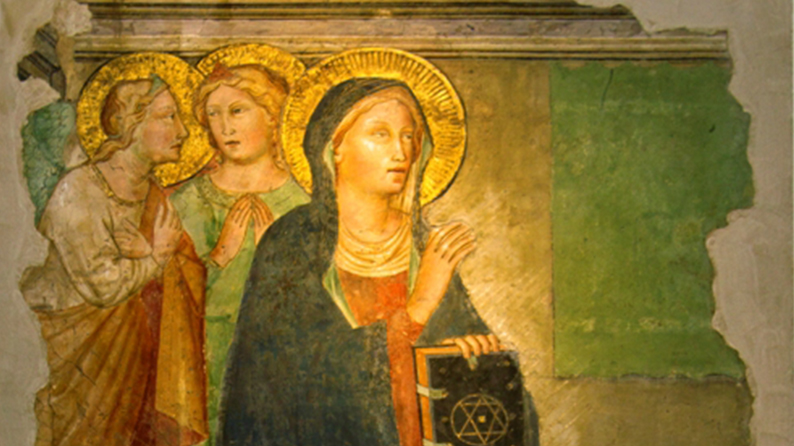
In the historic center of Montevarchi, next to the Collegiate Church of San Lorenzo, the evocative Museum of Sacred Art houses sculptures, frescoes, objects of fine goldsmithing, sacred furnishings, reliquaries and illuminated manuscripts, as well as important glazed terracotta of Della Robbia.
Among the works preserved in the Museum, some of them stand out for historical and artistic importance and for the uniqueness of the find: liturgical objects commissioned by the local Fraternity of the Holy Milk, established in the fifteenth century as a result of the gift by Count Guido Guerra of the relic that belonged to the emperor of Constantinople and later to the King of France Louis IX.
Another find of inestimable beauty is the Tempietto Della Robbia, rebuilt as it appeared inside the Church before being dismantled at the beginning of the 18th century, which housed the relic of the Madonna’s milk.
In addition, the museum is enriched with the presence of the Frieze showing Count Guido Guerra who gives the relic to the clergy (dated 1495-1500). This scene represented by Andrea della Robbia tells the moment of the gift to the prior of San Lorenzo of the Sacred relic of the Milk of the Madonna,
obtained by Charles of Anjou, brother of King Louis
IX, grateful for the support given by Count Guido Guerra, feudal lord of Montevarchi, in the battle of Benevento (1266).
Among the numerous liturgical objects, it is worth mentioning the Astile Cross of the Florentine goldsmith Piero di Martino Spigliati (16th century) in embossed and chiseled silver and the Shrine of the Holy Milk, in the shape of a small temple, in
carved ebony wood with decorations of silver and gilded copper, by Michele Genovini (1626-1669).
The museum also houses the Madonna Enthroned with Child and Saints, a fresco detached from the church of S. Andrea in Cennano and attributed to Luberto da Montevarchi (1460-1522), an artist who trained in the circle of Perugino, his collaborator at the Collegio del Cambio in Perugia, who worked a lot in Valdarno.
INFORMATION
Opening hours
Thursday 10.00-12.00 am
Saturday and Sunday 10.00-12.00 am / 4.00-6.00 pm
CONTACTS
Museum of the Collegiate Church of San Lorenzo
rue Isidoro Del Lungo, 4 52025 Montevarchi (Ar)
Phone: 055980468
E-mail: museo.artesacrasanlorenzo@gmail.com
Palaeontological Museum
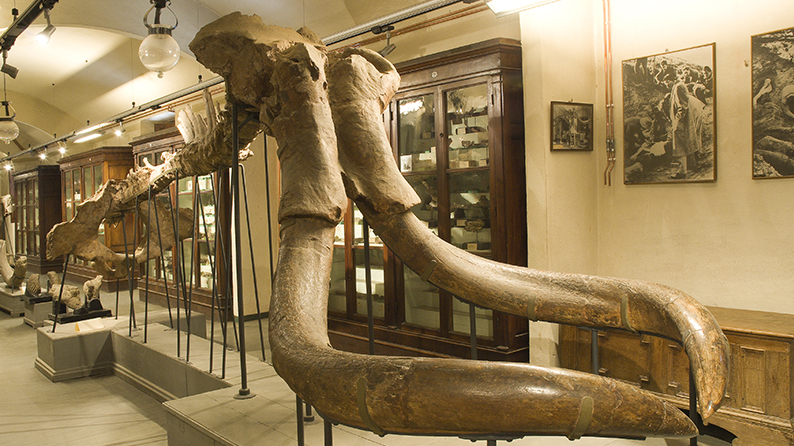
The Palaeontological Museum of Montevarchi is one of the oldest in Italy and was opened to the public for the first time in 1829. For two centuries it has collected and documented the climatic and environmental variations that have accompanied the natural history of the Valdarno.
In the new rooms, reopened in 2014, we can observe the reconstructions of the environment and the remains of the fauna (elephants, hippopotami, giant hyenas, canids, equids, tapirs, bovids…) that used to populate the Upper Valdarno as far back as 3 million years ago.
Thanks to a chronological path, a journey is made from the most ancient phase, characterised by high sequoia forests with a hot-humid climate, continuing through the period of glaciation
(2,500,000 years ago) and the great Pleistocene lake, up to the first human presence (200,000 years ago) attested by the world’s oldest “handled arrowhead”..
Since 2016, the Palaeontology Section has also been joined by the “Tracchi” Archaeology Section,
which provides an in-depth look at the Etruscan and Roman presence in Valdarno.
The Palaeontological Museum is housed in a 14th-century Franciscan convent, whose architecture still remains in the
traces of internal decorations and in the Renaissance cloister.
The Museum has a bookshop where it is possible to buy publications, educational games and personalised and themed gadgets.
INFORMATION
Opening hours
Winter (1 September – 31 May):
Thursday, Friday, Saturday and Sunday: 10.00 am-1.00 pm / 3.00-6.00 pm (until 7.00 on the fourth
Sunday of the month)
Summer (1 June – 31 August):
Thursdays: 10.00 am- 7.00 pm
Friday, Saturday and Sunday: 10.00 am.-1.00 pm. / 4.00 pm.-7.00 pm.
www.museopaleontologicomontevarchi.it
CONTACTS
Paleontological Museum Montevarchi
Via Poggio Bracciolini, 36/40, 52025 Montevarchi (AR)
Phone:055 981227
Phone:055 981812
E-mail: paleo@accademiadelpoggio.it
San Giovanni Valdarno
Casa Masaccio
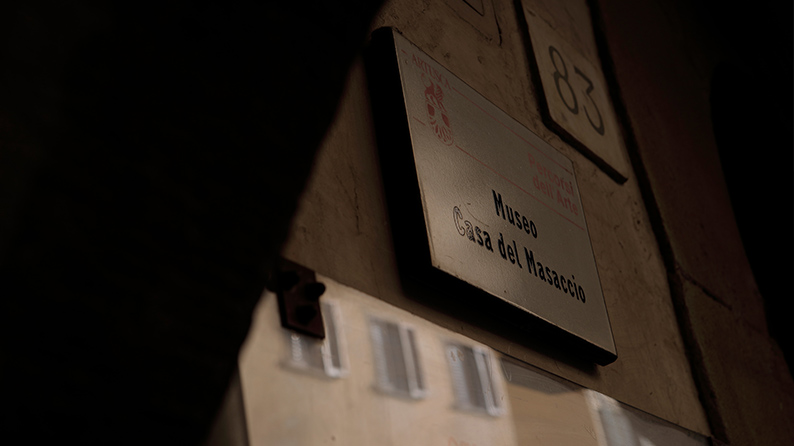
Over the years, it has gradually developed its identity from a municipal gallery to a center for contemporary art, acquiring recognition as a Museum of Regional Relevance thanks also to its work of enhancing,disseminating and promoting knowledge related to contemporary arts.
Casa Masaccio is certainly a rarity on the national scene: it is in fact one of the few houses attributed to a master of Renaissance painting (in this case, Tommaso Cassai, known as Masaccio) sufficiently documented to declare its authenticity.
Today in the Center for Contemporary Art the emergencies of contemporary arts are critically analyzed through a careful selection of exhibition activities, conferences, workshops, film reviews and concerts.
Over the years, the development of the collaborations undertaken has made it possible to host important works and artists in Casa Masaccio and to build synergies and relationships both on the territory and with the realities that deal with and produce contemporary culture at national and international level.
Casa Masaccio center for contemporary art is presented as a space in continuous transformation, a feature that has made it increasingly necessary to place alongside the museum new places in the city to support activities, including Palazzo Salviati, where the “Casa Masaccio in residence” project is carried out, a platform of residences for the mobility of both national and international artists and curators, and Casa Giovanni Mannozzi, where the permanent collection and the educational section of the museum are located.
INFORMATION
Free entry
Opening time
weekdays 3:00 – 7:00 pm
Holidays 10:00 – 12:00 am / 3:00 – 7:00 pm
CONTACTS
Phone:055 9126283
E-mail: casamasaccio@comunesgv.it
www.casamasaccio.it
Museum of the Basilica of Santa Maria delle Grazie
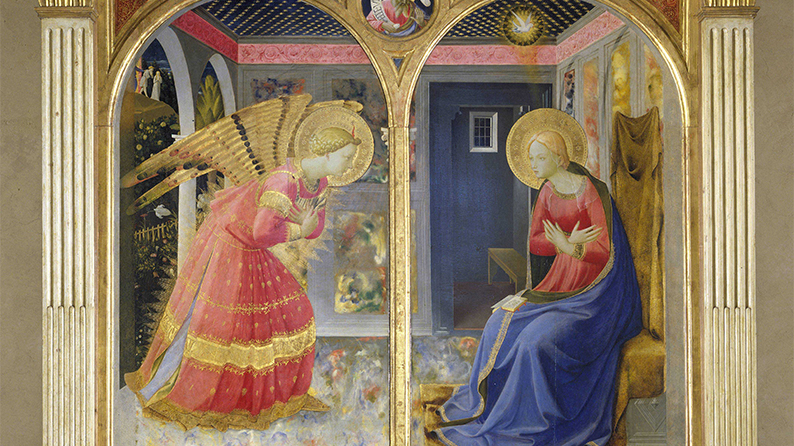
In 1990 it was opened to the public when, thanks to the Superintendency of Arezzo, three rooms were set up in the rooms behind the Basilica to house the most important works, including a masterpiece of the Annunciation by Fra Giovanni da Fiesole known as Beato Angelico, thus giving the opportunity to admire the features and beauty of important artworks .
The collection has also been enriched with some works recovered thanks to the contribution of individuals and companies of the area during the restoration campaign “The memory of art in 1999-2000”.
The Museum, whose scientific committee is also part of the Municipality of S.Giovanni Valdarno, is integrated into the Upper Valdarno Museum System. Since 2012, the Museum has been included in the list of museums accredited by the Tuscany Region as Museums of Regional Relevance, a recognition confirmed twice in 2015 and 2018.
INFORMATION
Morning: 10: 00 am/ 1: 00 pm
Afternoon: 3: 00/ 6: 30 pm
Closed: Monday and Tuesday.
Opening hours Basilica Maria S.S. delle Grazie: 8: 00/12: 00 am. – 2: 00/7: 00 pm.
TICKETS
Full: € 3.50
Reduced: € 2.50 for:
Groups of at least 15 people
Adults over 65 years
Children and teenagers between 6-18 years
Free entry:
Teachers accompanying school groups
Accompanying groups of at least 15 people
Disabled with companion
Authorized tour guides who show the card
Preschool children (0 to 5 years old).
CONTACTS
Phone: 055 912 37 35
E-mail:
info@museobasilica.it
www.museobasilica.it
Museum of Terre Nuove
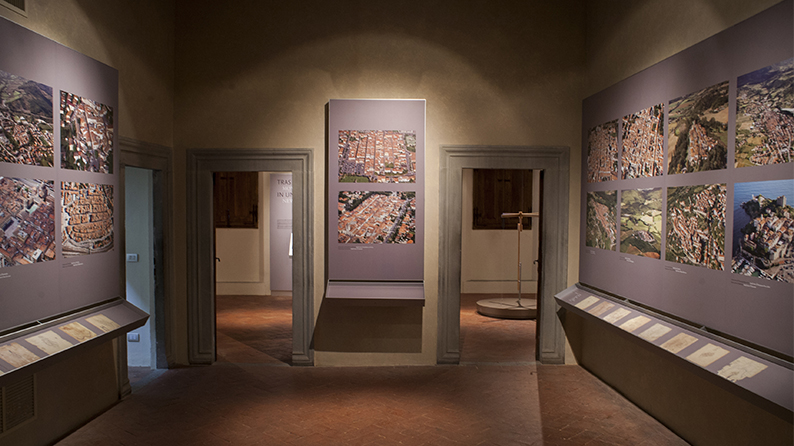
The Museo delle Terre Nuove is the first museum dedicated to the development of new settlements in the late Middle Ages, the Terre Nuove, which affected a large part of Europe and in particular Tuscany and the Florentine territory where since the end of the thirteenth century, Florence founded numerous garrisons including Castel San Giovanni, the current San Giovanni Valdarno. A real urban revolution of which Tuscany was the protagonist: the New Florentine Lands became the model for a new conception of the city.
Videos, images, interactive animations, models and historical re-enactments allow you to understand what were the urban and constructive features that shaped the New Tuscan Lands and outline the political background with demographic, economic and military aspects of these new communities, leading the public to immerse themselves in the lively medieval world.
INFORMATION
From Tuesday to Friday 3:00 p.m./7:00 p.m.
Saturday, Sunday 10:00 a.m./ 1:00 p.m. -3:00 p.m./7:00 p.m.
TICKETS
Full: € 5.00
Reduced: € 3,00 for groups between 18-25 years and
adults over 65 years
Free entry up to 18 years
+3,00 euros for animated tour service or activities.
Every first Sunday of the month free admission for all.
CONTACTS
Phone: 055 9126213
E-mail: info@museoterrenuove.it
Terranuova Bracciolini
The villages of the Balze
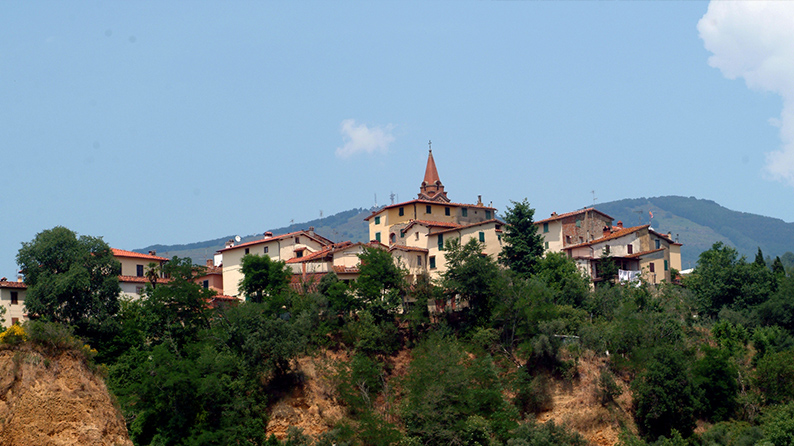
Close to Montemarciano, the Oratory of Our Lady of Graces, with a fresco of the XV century, initially considered a youthful work by Masaccio. The following detours – always on the right – lead to the Villa di Poggitazzi, (with farms, olive presses and stately palaces) and then to Persignano and Piantravigne, two splendid terraces on the panorama of the Balze, with hamlets perched on rocky spurs.
They, too, were small castles subjected to the supremacy of the Pazzi. A family member, Carlino, is remembered by Dante in a Canto of Inferno ( XXXII, 69).
The Hell Valley
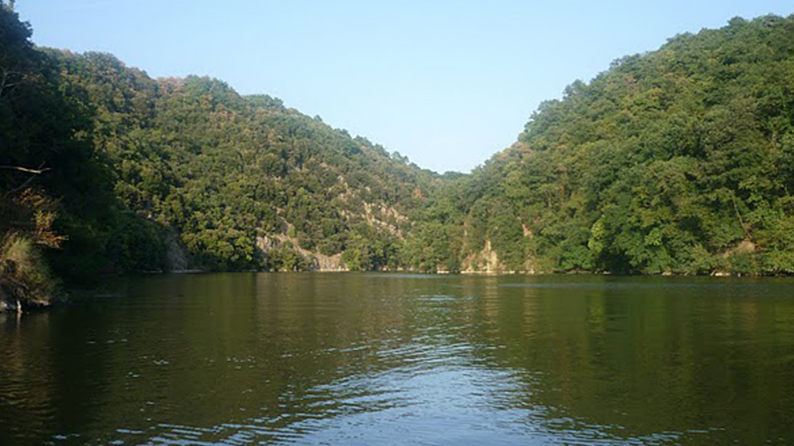
The Oasi Lake of Bandella is due to the construction of the dam in 1956 for the purpose of producing hydroelectric power, the dam created a reservoir where water , stored at a given height transformed the valley into a lake with a progressive rewilding. Today it is an area which needs protection and a certain control as it is an environment rich in biodiversity. The site, with the adjacent area- 500 hectares surrounded by thick oak woods- is designated a Nature Reserve.
In the quietness you can see white and gray herons, great cormorants, common kingfishers, typical shrikes, mallards; while up in the sky – looking for smaller prays- you can see red kites, kestrels, common buzzards and western marsh harriers.
Nearby, there are many paths through the woods and the countryside, and in the flowering season you can find so many varieties of wild orchids.
All around the area it is easy to find herds of roe deer, wild boars, crested porcupines, red foxes, as well as a very rare type of salamander called spectacled salamander.
Nearby Terranuova
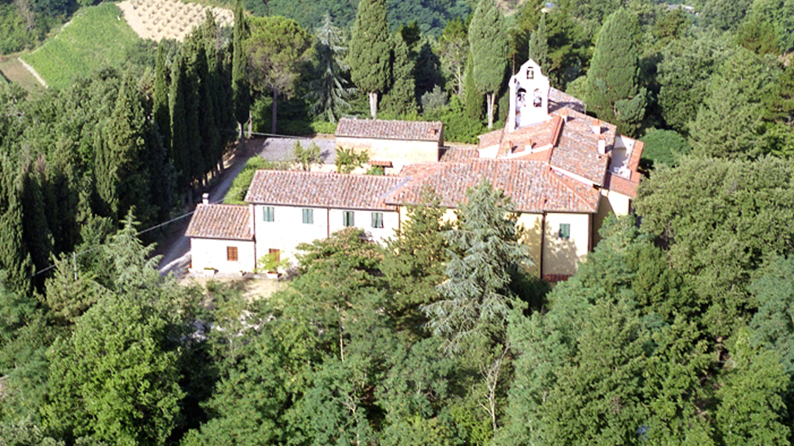
Val d’Ascione
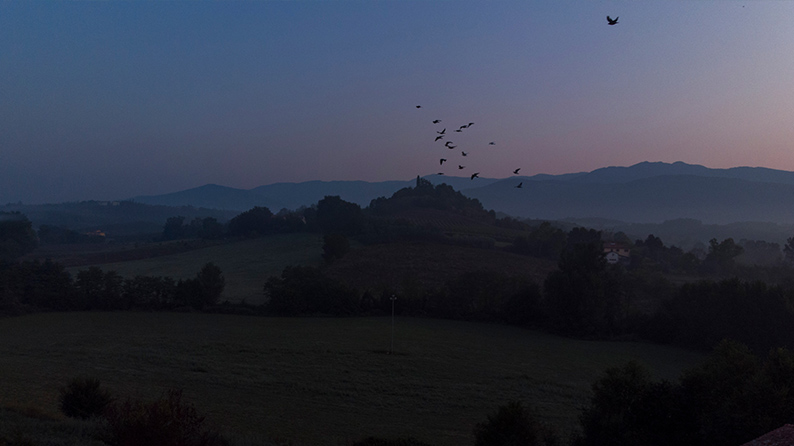
This is the cheese road, where you can buy pecorino, ricotta and raveggiolo. On the left, a series of hairpin bends lead to the ancient village of Cicogna, (near the Villa,it is worth noting an important historical garden, privately owned); on the right, and a little further on, you climb towards Castiglion Ubertini and Monticello, small rural agglomerations dating back to the fourteenth century, in a well maintained countryside with panoramic views.
Continuing the Ascione road, we can deviate to Traiana (settlement of Roman origin, born near the route of the Cassia Vetus; the current village developed, later, as a market of the castle; then you can find Campogialli, Ghibelline fief of the powerful Pazzi family, which retains the appearance of the fortified village, with picturesque alleys in the historic center. The church of Santa Maria in Campo Arsiccio is located just outside the town. The interior, a single nave, preserves an interesting cycle of frescoes ( thirteen and fourteen centuries ) by authors still unknown.
